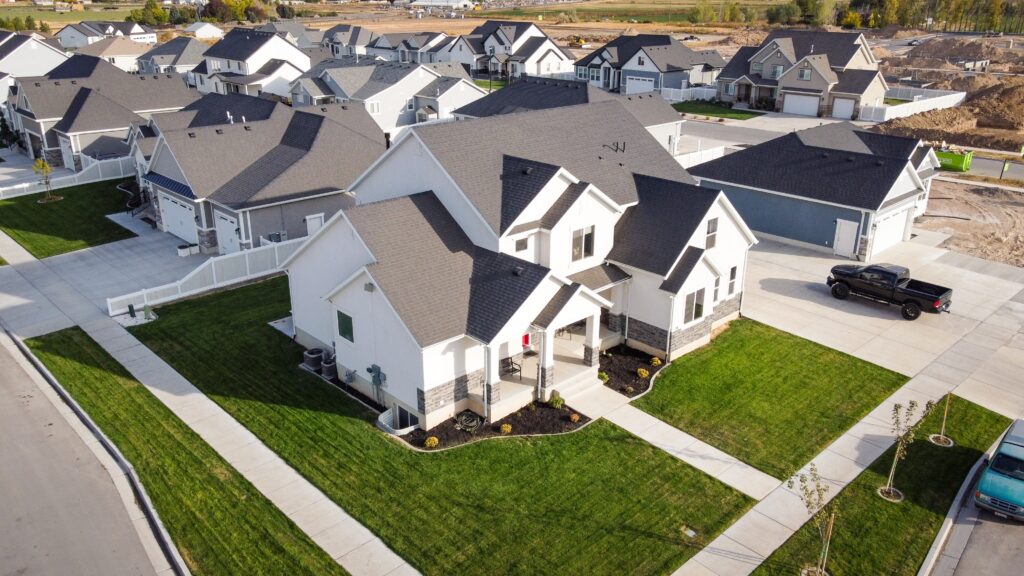Finding a home is hard enough. Potential homeowners spend months looking for the perfect home, and the work doesn’t stop once they find it. Next, they need to turn the house into a home which sometimes requires renovations and add-ons. These renovations can look like new flooring, a pool, patio, deck, etc. When your new house has a homeowners association, you’ll need to involve them to ensure that your plans comply with your community’s architectural guidelines.

Architectural guidelines and community aesthetics are among the most popular topics of restrictions within a Homeowners Association. While it can be frustrating, it’s one of the HOA’s many powers and duties and is valuable to the community.
In the United States, the law views any land use through a suspicious lens. With that said, the law recognizes that there are reasonable restrictions that can benefit a community as a whole- which is what an HOA does. It creates and upholds guidelines that benefit the community.
Historically, courts have upheld the right of an HOA to impose architectural limits as long as the restriction serves a legitimate purpose.
HOA restrictions and approval requirements are separate from local zoning ordinances and permitting rules. HOA restrictions are related to contract law principles, while zoning boards and planning commissions are through state and local governments.
If you’re looking to buy a home within an HOA community, ensure that any renovations you make follow your community’s HOA guidelines in addition to your state and local laws.
Benefits to HOA Architectural and Community Guidelines
Of course, HOA guidelines can be annoying. It’s your home, and you want to have the autonomy to do whatever you want, whenever you want. So why should you listen to your HOA guidelines? Or why should you buy into an HOA-run community?
While an HOA does more than just maintain the aesthetics of a community, it is one of their more well-known responsibilities, and there are benefits to community guidelines.
The main benefits of community guidelines are:
- Maintaining uniformity within the community
- Keeping property values high
An HOA works to maintain unity with the community. You want to create a cohesive environment for homeowners and potential homebuyers from the houses, common areas, and amenities.
Homeowners maintain an HOA to ensure their neighborhood stays visually pleasing with mowed and seeded lawns and clean common areas.
Beauty is in the eye of the beholder, and while something may be appealing to you, it may not be appealing to your neighbors. An HOA’s community guidelines help mitigate disagreements on what’s considered “aesthetic.”
HOA guidelines are a community effort to protect a home’s value. By enforcing conformity, homeowners can avoid living near houses with wild modifications. In an HOA-managed neighborhood, properties are very uniform to one another. When homes have changes that cause them to stand out from the other houses, it can cause property values to drop.
So, while an entirely yellow house can be a fun and unique idea, it could also be an eye-sore for your neighbors who may disagree or potential homebuyers. An HOA is there to help a community avoid anything that could negatively impact the home’s value.
Ideally, there will be a good balance between architectural restriction, individual rights, and community well-being.
Types of Home Improvement Projects Requiring HOA Approval
Typically homeowners need a show approval for exterior renovations like painting the outside, building a fence, adding a patio or deck, and even changing the front door of their home.
Additionally, an HOA requires homeowners to seek approval when undertaking interior renovations like changing the flooring.
Here are a few types of projects that need HOA approval:
- Bathroom tiling
- Structural changes (like the house’s foundation, plumbing, electrical, etc.)
- Exterior changes (landscaping, new roofs, door trim, exterior paint, etc.)
- Replacing the ceiling
While I’m sure learning about an HOA, their impact on your home’s aesthetics, and the types of projects that need approval can be a bit overwhelming, don’t worry. When you buy a home or establish an HOA, your community guidelines should be readily available or easily accessible. As a homeowner, you should not be surprised by what you can and cannot do or what projects need HOA pre-approval.
Before starting any projects, we recommend reviewing your HOA’s guidelines and ensuring you have the proper approvals or you’re not going against any community requirements.
When you have home inspiration, jumping in and getting started is easy. However, if you do not follow guidelines or haven’t gotten approval first, an HOA could stall work on your project, have you redo your work, or ask you to stop working on your project overall. Do the proper preliminary research and get approval (if applicable) first! It will help you to avoid wasting your time and resources.

An HOA may:
- Request scheduled work times
- Inquire on how the contractor intends to store any materials
- Inquire on how the contractor intends to dispose of any debris
- Provide a list of approved contractors (If they do not, ensure that whoever is working on your home is a licensed professional.)
Once a project is complete, an HOA may inspect it to ensure that it complies with the community rules and that everything has been disposed of properly.
Keep in mind that if you make any alterations without HOA approval, they maintain the authority to stop renovations or ask you to redo those alterations to comply with your community’s guidelines.
It’s no secret that uniform conformity is a touchy topic for many homebuyers. While they may want to express their personalities or create a unique space, an HOA community could hamper those plans.
HOA guidelines benefit the community as a whole. If you reach out to your HOA about modifications that would cause your home to stand out against the other homes in your neighborhood, you will likely not be approved for any changes.
Architectural guidelines are collectivist guidelines, and while it can be frustrating or upsetting, they keep your home and neighborhood appealing to everyone.
HOA guidelines balance the homeowner’s needs and the community’s needs. If you’re looking to express your individuality within your home, there are still ways to do that, but your HOA will intervene if things get too out of hand.
The goal of the HOA is to keep the community maintained and the property values high.
If you’re looking to form a homeowners association or you are an HOA looking to solidify and streamline your current guidelines, it may be time to consider an HOA management company. If that time comes, we’ll be here, ready to help you make the vision you have for your community a reality. Contact us today!




